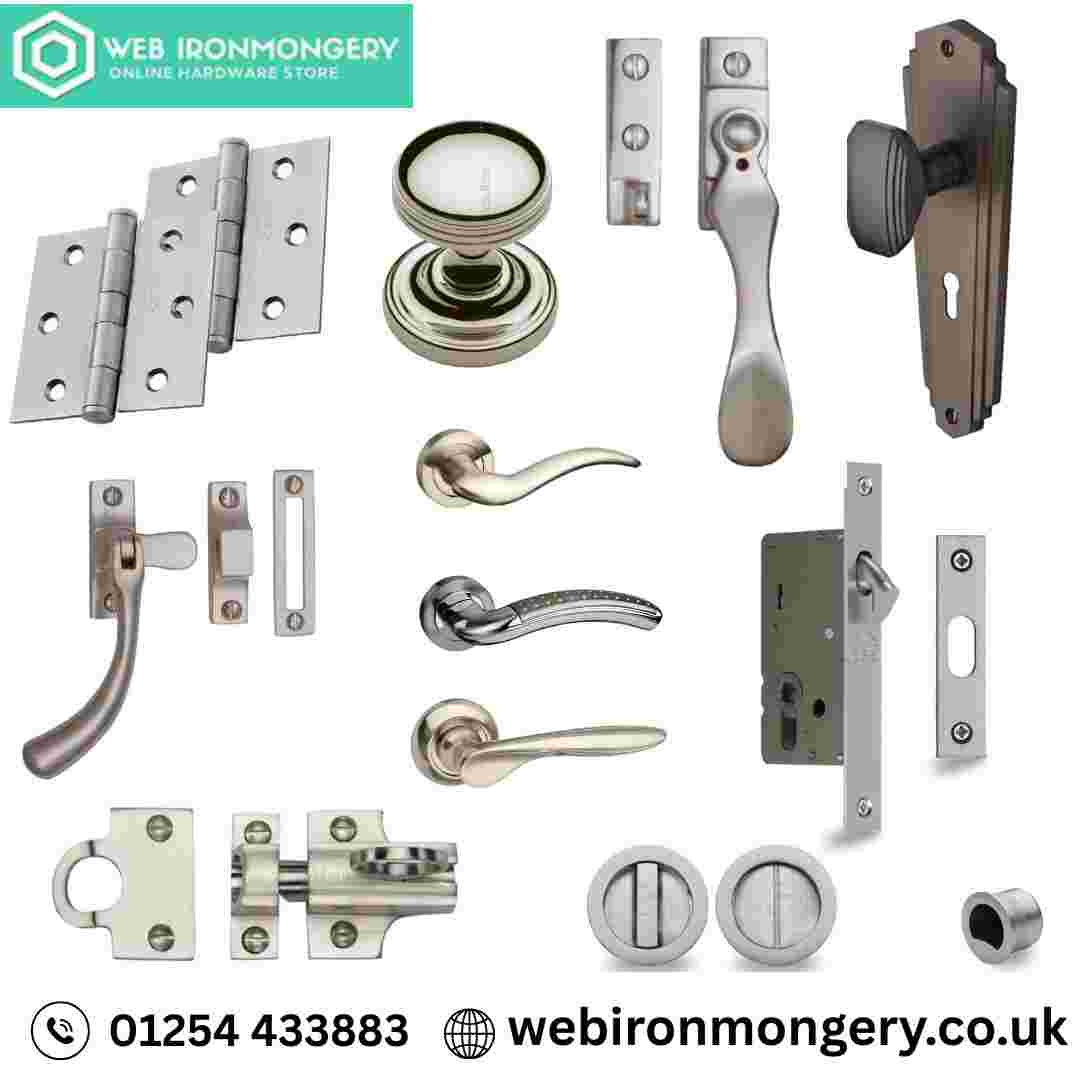Ironmongery is a cornerstone of architecture and interior design, encompassing the hardware that ensures our buildings are secure, functional, and aesthetically pleasing. From the hinges on your doors to the handles on your cabinets, ironmongery plays a pivotal role in both the form and function of our spaces. In this comprehensive guide, we'll delve into the world of ironmongery, exploring its history, types, applications, and the latest innovations shaping the industry
What is Ironmongery?
Historically, ironmongery referred to the manufacture and sale of iron goods. Over time, the term has evolved to encompass a wide range of hardware items made from various materials, including steel, brass, aluminum, and even plastics. These items are integral to the construction and functionality of buildings, covering everything from door handles and locks to hinges and brackets.
A Brief History of Ironmongery
The origins of ironmongery trace back to around 1200 BC, marking the advent of iron use in toolmaking. In England, the term "ironmonger" emerged around 1362 AD, referring to individuals who supplied iron goods to the public. The Industrial Revolution significantly transformed the industry, introducing mass production techniques that made ironmongery more accessible and diverse.
Types of Ironmongery
Ironmongery encompasses a vast array of hardware, each serving specific functions:
1. Door Hardware
- Handles and Knobs: Available in various styles and finishes, they provide both functionality and aesthetic appeal.
- Locks and Latches: Ensure security and privacy across different spaces.
- Hinges: Facilitate the smooth operation of doors, with options like butt hinges, concealed hinges, and pivot hinges.
- Door Closers and Stops: Control the opening and closing of doors, enhancing safety and convenience.
- Fasteners and Stays: Secure windows in open or closed positions.
- Espagnolette Handles: Common in modern windows, offering enhanced security.
3. Cabinet and Furniture Hardware
- Drawer Slides: Enable smooth opening and closing of drawers.
- Brackets and Supports: Provide structural integrity to furniture and shelving units.
4. Architectural Ironmongery
- Handrails and Balustrades: Combine safety with design, especially in staircases and balconies.
- Signage and Accessories: Include items like door numbers, nameplates, and other decorative elements.
The Role of Ironmongery in Modern Construction
Ironmongery is not just about functionality; it's integral to the overall design and usability of a building:
- Security: High-quality locks and access control systems protect against unauthorized entry.
- Accessibility: Features like lever handles and automatic door closers make spaces more accessible to individuals with disabilities.
- Aesthetics: The choice of materials and finishes can complement or enhance the architectural style of a building.
- Compliance: Ensuring that hardware meets building codes and standards, particularly concerning fire safety and accessibility.
Innovations in Ironmongery
The ironmongery industry continues to evolve, embracing new technologies and design philosophies:
Smart Technology
Integration of smart locks and access systems allows for remote control and monitoring, enhancing security and convenience.
Sustainable Materials
Manufacturers are increasingly using recycled metals and eco-friendly finishes to reduce environmental impact.
Ergonomic Design
Focus on user-friendly designs ensures that hardware is accessible and comfortable to use for all individuals.
Choosing the Right Ironmongery
Selecting appropriate ironmongery involves considering several factors:
- Functionality: Ensure the hardware meets the specific needs of the space.
- Durability: Choose materials that can withstand the intended use and environmental conditions.
- Aesthetic Compatibility: Select styles and finishes that align with the overall design theme.
- Compliance: Verify that the hardware meets relevant building codes and standards.
Maintenance and Care
Proper maintenance extends the lifespan and functionality of ironmongery:
- Regular Cleaning: Use appropriate cleaners to prevent corrosion and maintain appearance.
- Lubrication: Apply lubricants to moving parts to ensure smooth operation.
- Inspection: Periodically check for wear and tear, replacing components as necessary.
FAQs:
What is ironmongery used for?
Ironmongery encompasses hardware used in building construction and design, including door handles, locks, hinges, and other fittings that ensure functionality and security.
How do I choose the right door hardware?
Consider the door's function, the desired aesthetic, and the level of security required. Consulting with a professional can provide tailored recommendations.
Are there eco-friendly ironmongery options?
Yes, many manufacturers offer hardware made from recycled materials and sustainable finishes to reduce environmental impact.
Can ironmongery enhance home security?
Absolutely. High-quality locks, bolts, and access control systems are essential components of a secure home.
How often should I maintain my door hardware?
Regular maintenance, including cleaning and lubrication, should be performed every six months to ensure optimal performance.
What materials are commonly used in ironmongery?
Common materials include stainless steel, brass, aluminum, and sometimes plastics, each offering different aesthetic and functional properties.
Is smart ironmongery worth the investment?
Smart hardware offers enhanced security and convenience, making it a worthwhile investment for many homeowners and businesses.
How does ironmongery contribute to building accessibility?
Features like lever handles, automatic door closers, and appropriately placed handrails make buildings more accessible to individuals with disabilities
Ironmongery is a vital aspect of building design and functionality, blending practicality with aesthetics. By understanding its various components and applications, you can make informed decisions that enhance the safety, accessibility, and visual appeal of your spaces.




